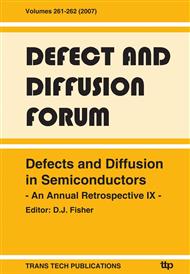p.1
p.25
p.31
p.37
p.47
p.55
p.61
p.77
p.85
Electronic structure and doping effect of Ni and Co in the kink on the edge dislocation of bcc iron
Abstract:
Using the first-principles self-consistent discrete variational method based upon density functional theory, we investigated the energetics and the electronic structure of the 3d impurities Ni and Co in a kink on the [100](010) edge dislocation (ED) in bcc iron. The calculated results show that the interatomic energies between the impurity atom and the neighboring host atoms decrease. The bonding for the impurity atom (Ni, Co) and the neighboring host Fe atoms is weaker than that for an Fe atom at the X site and the corresponding atoms in the clean kink. These results indicate that sideways motion of the kink in the <100>{010} ED is accelerated by an impurity atom such as Ni or Co and that, consequently, the presence of impurities increases the dislocation mobility, thus leading to solid-solution softening.
Info:
Periodical:
Pages:
37-46
Citation:
Online since:
January 2007
Authors:
Keywords:
Price:
Сopyright:
© 2007 Trans Tech Publications Ltd. All Rights Reserved
Share:
Citation:


